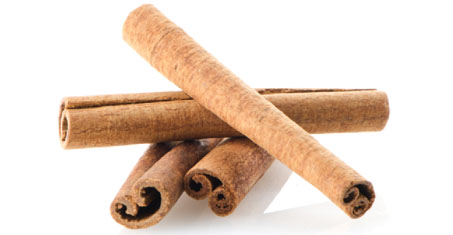What Is Cassia?
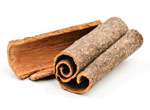
A spice made from the bark of the Cinnamomum aromaticum tree. Cassia bark (both powdered and in whole, or "stick" form) is used as a flavouring agent for confectionery, desserts, pastries, and meat; it is specified in many curry recipes, where Ceylon cinnamon is less suitable. Cassia is sold as pieces of bark or as neat quills or sticks.
Cassia Plant and Cultivation
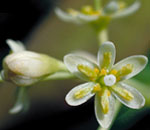
An evergreen tree growing to 7 m with a white aromatic bark and angular branches. The leaves are oblong-lancelate about 18 cm (7 in) long. Small yellow flowers hang from long stocks, and bloom in early summer. It grows in hot, wet, tropical climates both wild and commercially. The stems are cut down when the bark is mature. The bark is removed in short lengths and dried, with some varieties rolling into quills.
Cassia Description
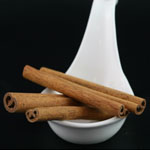
Cassia is an aromatic bark, similar to cinnamon, but differing in strength and quality. Its bark is darker, thicker and coarser, and the corky outer bark is often left on. The outer surface is rough and grayish brown, the inside bark is smoother and reddish-brown. It is less costly than cinnamon and is often sold ground as cinnamon. When buying as sticks, cinnamon rolls into a single quill while cassia is rolled from both sides toward the centre so that they end up resembling scrolls.
Uses of Cassia
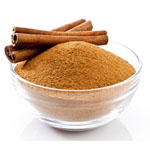
Cassia bark was often burned as incense in the past, and a fat obtained from the fruit was once used to make church candles. The powerful fragrance of either spice can be used in potpourris, in herb pillows and herb bags to keep moths away. It is also one of the ingredients of Carmelite water. Pliny used cassia in a perfume recipe for men in his Natural History, and many sources recommend it as a spice with which to perfume linen. Cassia is now popular in many soaps and men’s cosmetic preparations.
10 Health Benefits of Cassia
1 - Anti-inflammatory - The terpenes in cassia oil also offer antirheumatic and anti-inflammatory benefits. Cassia strengthens the circulatory system and increases blood flow to the joints and other affected areas.
2 - Gastrointestinal Problems - Cassia oil offers a variety of benefits for the gastrointestinal tract and digestive processes. It has anti-diarrheal properties that controls the bowels, but its anti-microbial components kill the bacteria that is responsible for it, according to Organic Facts.
3 - Diabetes - Cassia has been used to treat both Type 1 and Type 2 diabetes. Cassia cinnamon may lower blood glucose levels.
4 - Enhances Brain Function - Cassia oil works as a stimulant in the brain. It helps to regulate metabolism, improve circulation and strengthen the nervous system.
5 - Fights Infection - Cassia oil is used for its antimicrobial and antiviral properties.
6 - Antidepressant - Cassia is an efficient antidepressant which has the ability to bust stress, leaving the body feeling warm as well as tranquil. Cassia consists of cinnamic aldehyde, an element which has been analyzed and is also recognized to reduce stress-induced behaviors and conditions.
7 - Curbs Hemorrhage - Cassia offers you effective astringent effects that help with curbing extreme bleeding or hemorrhages in any portion of your body. This beneficial spice contracts the blood vessels successfully as well as stops bleeding.
8 - Anti-emetic - Cassia has numerous qualities. One of the vital ones is definitely the capability to deal with nausea as well as curtail vomiting. This particular property of cassia causes it to be a significant anti-emetic. The spicy taste as well as rich aroma induce freshness as well as repel nauseating feelings.
9 - Anti-Rheumatic and Anti-Arthritic - As being a circulatory along with a stimulant substance, Cassia increases the circulation of the blood as well as brings warmth towards the joints along with other parts of the body suffering from rheumatism and arthritis, this provides you with rest from these unpleasant conditions.
10 - Strengthens Gums - You should use cassia oil to boost your gums. By using this oil helps you have got good dental hygiene.
Producing Countries of Cassia
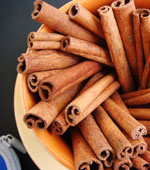
Demand for cassia as spice has always been strong although some substitution occurs based on price, while competition from synthetic alternatives does not noticeably affect the trade. Cassia is mainly produced and exported from the East Asian region making China, Indonesia and Vietnam, the leading producers and exporters. Indonesia and China, the major producers of Cassia have together captured almost 80% of the volume wise. There has been an increasing trend in export of cassia products from Indonesia, China and Vietnam. Other major producers include Srilanka and Madagascar.
Consuming Countries of Cassia

The major market of Cassia is the European Commision (EC), within which France is the biggest importer. In recent years the United States has emerged as the largest importing country. Imports into the USA have risen in recent years and, with a soft drinks market which shows no sign of weakening, demand for cassia oil is expected to remain strong. Imports from Japan and Hong Kong are almost entirely re-exports of China. The UAE is the major buyer of Chinese cassia bark and leaf oil. Vietnam Cassia is exported to the USA. Indonesia Cassia (C. burmannii) is also an important export product to USA.
Recipe for Beverages with Cassia
Pina Colada Punch
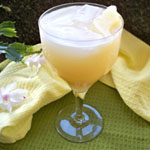
Ingredients: A: 5 Piece dried ginger root -- bruised with spoon B: 5 tablespoons Light-brown sugar C: 5 tablespoons Cassia bark -- broken in pieces D: 3 1/3 cups Water E: 10 Chin
Preparation MethodA: Put ginger, sugar and cassia bark in a saucepan. B: Add 2/3 cup water and bring to a boil. Cover and simmer 5 minutes. Remove from heat and add teabags. C: Let stand 5 minutes, then strain into a bowl. In a blender or food processor, blend coconut and boiling
Recipe for Cooking with Cassia
Java Chicken

Ingredients: A: 3 lbs chicken B: 4 brazil nuts, ground C: 1/2 tsp chilli powder D: 2 tsp coriander ground E:1 tsp galangal (laos powder) F: 1 garlic clove, crushed G: 1/2 tsp turmeric, ground H: 4 tbsp oil I: 2 onions chopped J: 3 cups coconut milk K: 2 in cassia bark L: 1 lemon grass stalk or 1 tsp powder M: 2 tbsp lemon juice N: salt
Preparation MethodA: Joint chicken and cut across bone into serving pieces. B: Mix nuts, chilli, coriander, galangal, garlic and turmeric to a paste with a little oil and rub over the chicken. Leave for a few hours. C: Heat remaining oil in wok or pan and fry onions until golden. Add chicken pieces and fry until golden. D: Gradually add coconut milk, stirring while bringing to the boil to prevent curdling. Add lemon grass and cassia and simmer uncovered for about 30 minutesor until the sauce is thick. E: Stir in lemon juice and add salt to taste.
Recipe for Dessert with Cassia
Cassia Ice Cream
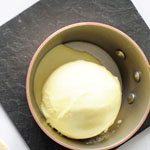
Ingredients: A: 15g of cassia, crushed B: 250ml of milk C: 75ml of double cream D: 2 egg yolks E: 65g of caster sugar
Preparation MethodA: Gently warm the milk and cream in a pan, then add the cassia and set aside to infuse for 2 hours. B: Once infused, bring the milk, cream and cassia to the boil. Meanwhile, whisk the eggs and sugar together until thick and pale, then pour the cream and cassia mix into the eggs, whisking to combine. C: Pour everything back into the pan and stir over a low heat until thickened. D: Pass through a sieve into a mixing bowl and set over iced water. Stir so that the mixture cools quickly and taste the mix. If needed, return the cassia bark for a while longer to achieve a deeper flavour. E: Once the mixture is chilled and the flavour is to your liking, churn in an ice cream maker. Store in the freezer until required.

